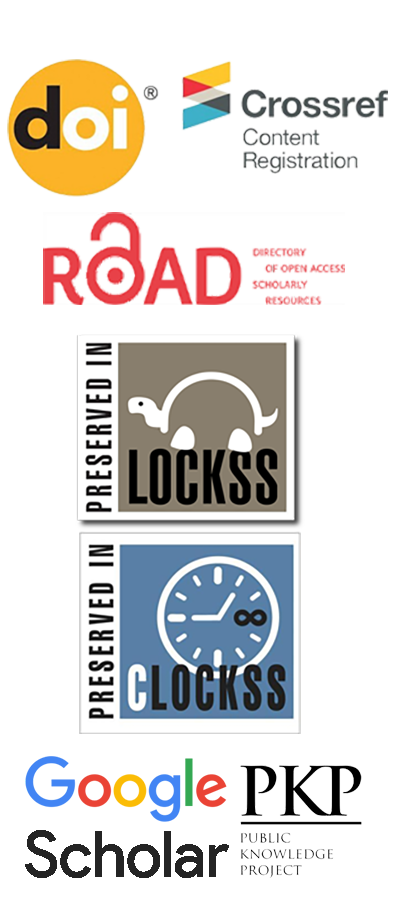On the “Assessment Morass” in Higher Education: A Program Level Perspective of Alignments and Tools
DOI:
https://doi.org/10.25007/ajnu.v8n4a460Keywords:
Assessment Types, Program Assessment, Self Assessment Report/Review (SAR), Academic Accreditation, Quality Assurance, Nawroz UniversityAbstract
A taxonomy of assessment types practiced in higher education institutions (HEIs) in general is briefly reviewed, focusing on specific methods and tools commonly employed at the academic program level with student learning in mind. The approach is aimed at complementing the efforts being currently exerted to initiate outcome-based education (OBE) environments in HEIs in the region by drawing attention to some issues that may be observed along the path of obtaining insight into achieving satisfactory results and providing suitable feedback. Suggestions are forwarded aiming at enhancing procedures being employed leading to improvements in various academic institutional and programmatic aspects which quality assurance (QA) and accreditation standards/criteria demand.
Downloads
References
2. Program Assessment Handbook, University of Central Florida, 2008 edition
3. Mohammed Ali Shallal (2018). Alignment of Curriculum Elements at the Course Level: Two Useful Tools. Academic Journal of Nawroz University (AJNU) Volume 7, No 1, 85-92.
4. Mohammed Ali Shallal (2018). Trends in Undergraduate Program Curriculum Frameworks. Academic Journal of Nawroz University (AJNU) Volume 7, No 3, 228-234.
5. Curriculum Guidelines for UG Degree Programs in Computer Science, ACM, IEEE Computer Society, December 2013.
6. CAA Standards (2019), Commission for Academic Accreditation Standards, UAE, http ://www.caa.ae
7. The European Credit Transfer and Accumulation System (ECTS), ECTS Users’ Guide 2015
8. Al Ain University of Science & Technology, http://www.aau.ac.ae
9. Qatar University, Academic Catalog, http://www.qu.edu.qa
10. Standards and Guidelines for Quality Assurance in the European Higher Education Area (ESG). (2015), Brussels, Belgium.
11. Mohammed Ali Shallal (2019), The Bologna Process: Question of Priorities and Relevance. Academic Journal of Nawroz University (AJNU) Volume 8, No 3, 1-5.
12. Leskes, A. (2002), Beyond confusion: An assessment glossary. Peer Review, 4(2/3), Association of American Colleges and Universities.
13. “Towards excellence in medical education and health care” , Report on the Workshop on accreditation of medical education in Iraq, Amman, Jordan 31 March – 1 April 2016.
14. Ajman University (2019), Undergraduate Student Catalog 2019-2020
15. Ajman University (2019), Quality Assurance Manual 2019-2020.
16. Amira Bibo Sallow, Muaid Abdlqader, Nada E. Tawfiq, Mohammed Ali Shallal, (2019), Initiating an Outcome-Based Education Environment at a Higher Education Institution: A Case Study’, Academic Journal of Nawroz University (AJNU) Volume 8, No 3,
17. Manual for the Principles of Accreditation: Foundations for Quality Enhancement, Southern Association of Colleges and Schools Commission on Colleges (SACSCOC), Third Edition: 2018.
18. ABET, Accreditation Board for Engineering and Technology, http : //www.abet.org.
19. ABET Self-Study Questionnaire: Template for a Self-Study Report, 2019-2020 Review Cycle.
Downloads
Published
How to Cite
Issue
Section
License
Authors retain copyright
The use of a Creative Commons License enables authors/editors to retain copyright to their work. Publications can be reused and redistributed as long as the original author is correctly attributed.
- Copyright
- The researcher(s), whether a single or joint research paper, must sell and transfer to the publisher (the Academic Journal of Nawroz University) through all the duration of the publication which starts from the date of entering this Agreement into force, the exclusive rights of the research paper/article. These rights include the translation, reuse of papers/articles, transmit or distribute, or use the material or parts(s) contained therein to be published in scientific, academic, technical, professional journals or any other periodicals including any other works derived from them, all over the world, in English and Arabic, whether in print or in electronic edition of such journals and periodicals in all types of media or formats now or that may exist in the future. Rights also include giving license (or granting permission) to a third party to use the materials and any other works derived from them and publish them in such journals and periodicals all over the world. Transfer right under this Agreement includes the right to modify such materials to be used with computer systems and software, or to reproduce or publish it in e-formats and also to incorporate them into retrieval systems.
- Reproduction, reference, transmission, distribution or any other use of the content, or any parts of the subjects included in that content in any manner permitted by this Agreement, must be accompanied by mentioning the source which is (the Academic Journal of Nawroz University) and the publisher in addition to the title of the article, the name of the author (or co-authors), journal’s name, volume or issue, publisher's copyright, and publication year.
- The Academic Journal of Nawroz University reserves all rights to publish research papers/articles issued under a “Creative Commons License (CC BY-NC-ND 4.0) which permits unrestricted use, distribution, and reproduction of the paper/article by any means, provided that the original work is correctly cited.
- Reservation of Rights
The researcher(s) preserves all intellectual property rights (except for the one transferred to the publisher under this Agreement).
- Researcher’s guarantee
The researcher(s) hereby guarantees that the content of the paper/article is original. It has been submitted only to the Academic Journal of Nawroz University and has not been previously published by any other party.
In the event that the paper/article is written jointly with other researchers, the researcher guarantees that he/she has informed the other co-authors about the terms of this agreement, as well as obtaining their signature or written permission to sign on their behalf.
The author further guarantees:
- The research paper/article does not contain any defamatory statements or illegal comments.
- The research paper/article does not violate other's rights (including but not limited to copyright, patent, and trademark rights).
This research paper/article does not contain any facts or instructions that could cause damages or harm to others, and publishing it does not lead to disclosure of any confidential information.





